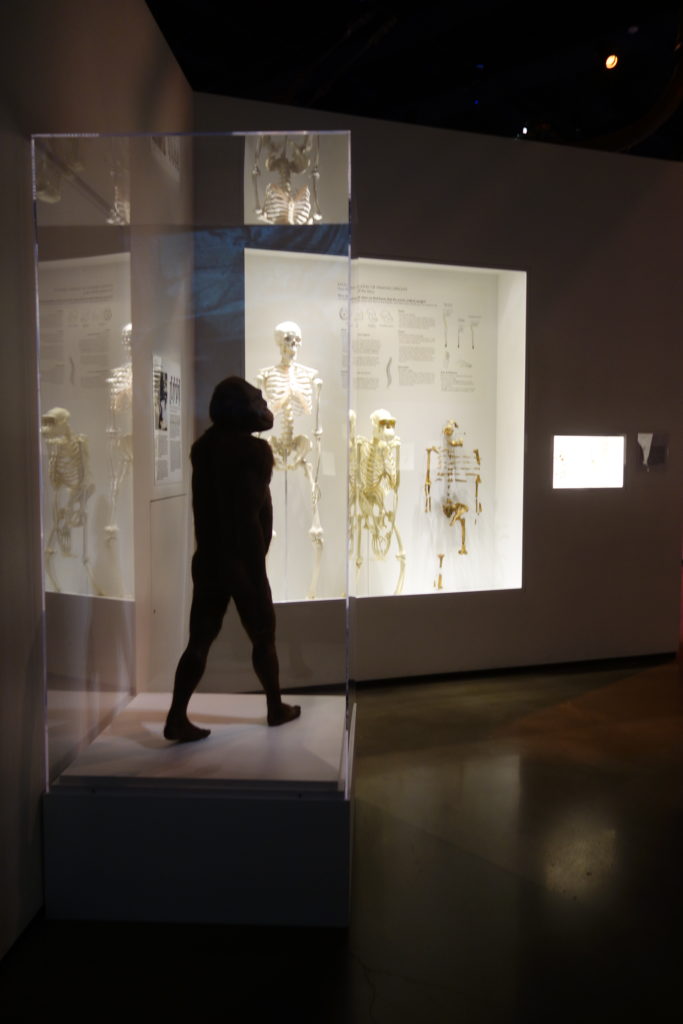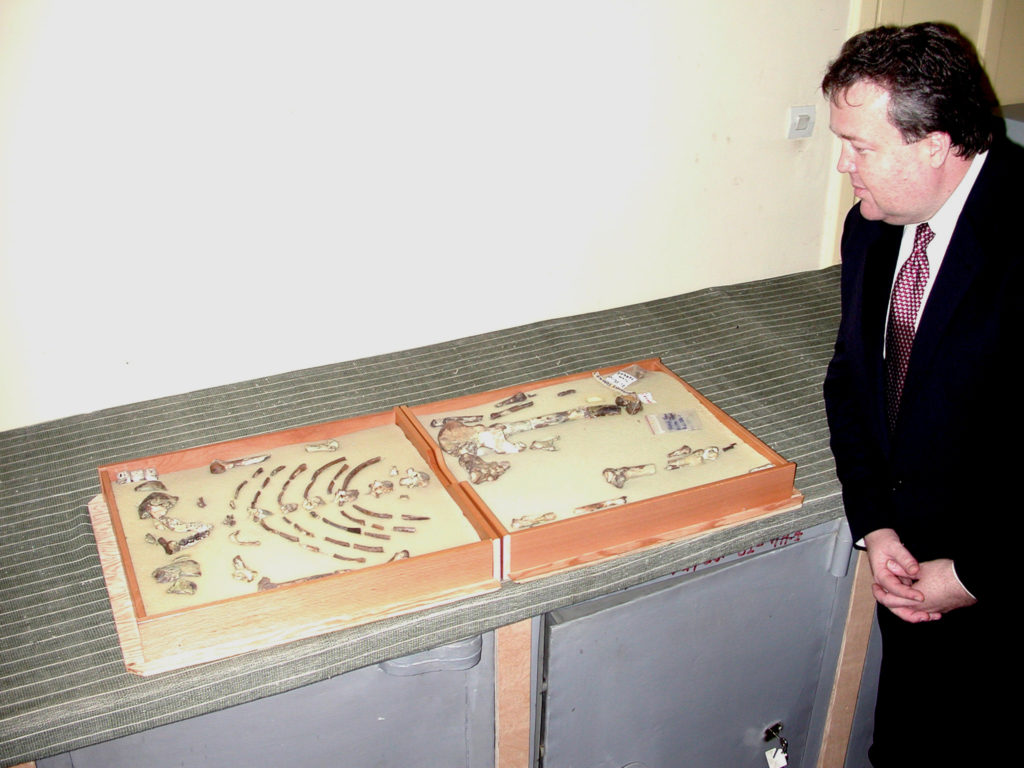Those who are frequent visitors to the Morian Hall of Paleontology might have noticed that a familiar face has reappeared. The very last section of the exhibit hall now shows a life-sized version of a female Australopithecus afarensis. Not just any afarensis, mind you, but rather a fleshed-out model of the famous Lucy. One can find her at the very end of the storyline, next to a wall case in which a skeleton of a modern human being, a chimpanzee, and a replica of Lucy’s skeleton are displayed.

On November 24, 1974, a group of paleoanthropologists found the remains of an early hominid. The initial discovery of a perfectly preserved elbow end of a forearm bone was followed by that of additional portions of the skeleton. That evening, as a Beatle song “Lucy in the Sky with Diamonds” was playing in camp, these remains were nicknamed “Lucy.” Among scientists, she is known as AL 288-1, an Australopithecus afarensis, or “southern ape from the Afar region.”

Lucy may be the most famous australopithecine, but she is not the only representative of this species. Many other Australopithecus afarensis have been found eastern Africa. Living between 3.85 and 2.95 million years ago, they were small compared to modern humans, with females often substantially smaller than males. She measured about three-and-a-half feet tall and probably weighed about 60 to 65 pounds.
Australopithecines walked upright and could climb trees more easily than us. The Houston Museum of Natural Science hosted Lucy as part of a special exhibit, “Lucy’s Legacy: The Hidden Treasures of Ethiopia” from August 31, 2007 through September 1, 2008. Shortly thereafter, researchers at The University of Texas at Austin, in collaboration with the Ethiopian government, completed the first high-resolution CT scan of Lucy’s skeleton. Professor John Kappelman led the scientific team that conducted the scan.

The high-resolution CT scans of Lucy’s remains, especially of her long bones, allowed the research team that included orthopedic surgeons to identify fractures typically associated with a fall. Since we now know that Lucy was capable of climbing trees more easily than modern humans, and that she and her cohorts most likely spent time feeding and nesting in trees in order to avoid predators, then one can see how she may have fallen out of a tree. The Ethiopian government, the Houston Museum of Natural Science, and the University of Texas at Austin worked together solved one of the oldest coldest cases, determining the cause of death of the most famous fossil on planet Earth!

